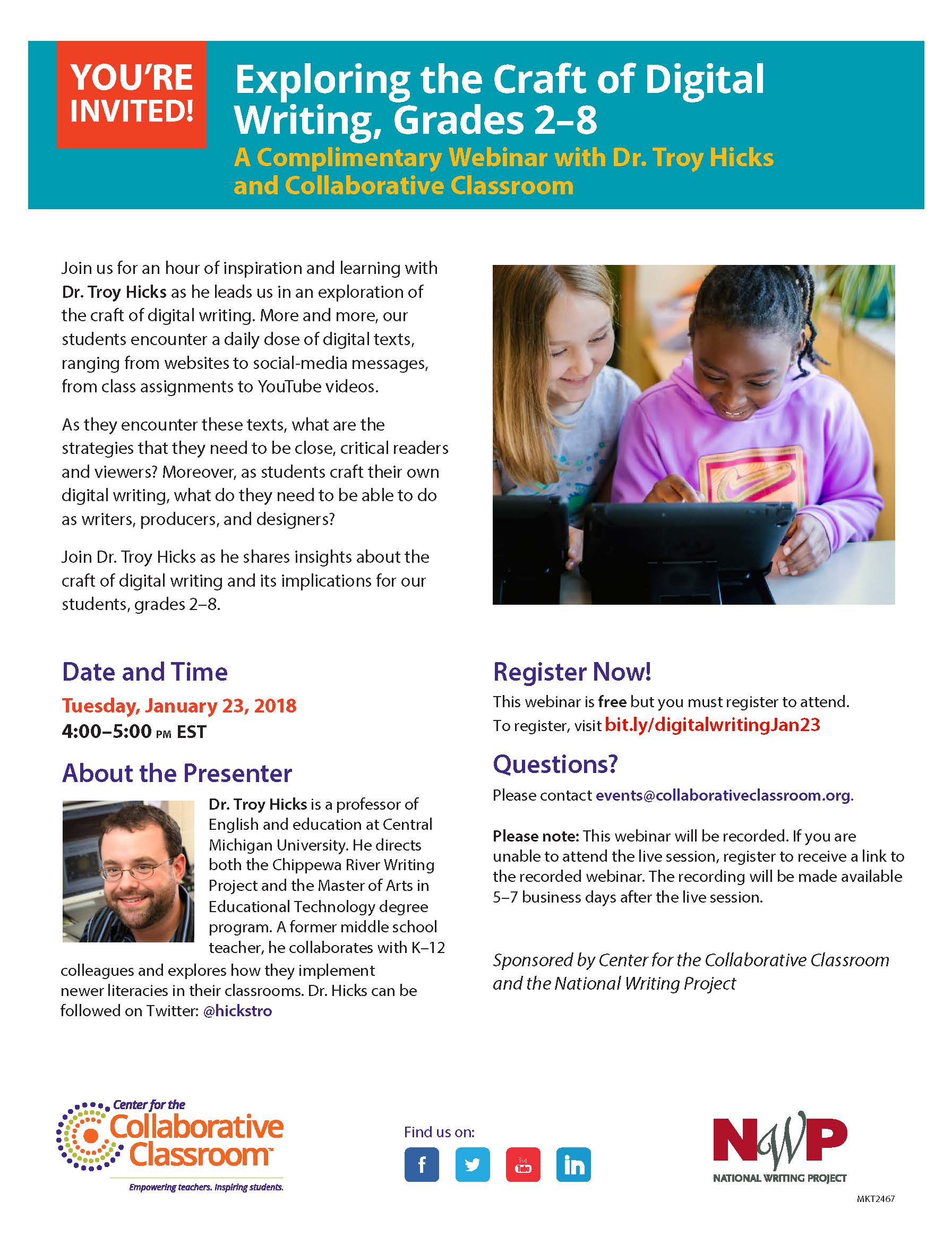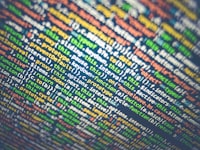Enjoy this archived recording of “Exploring the Craft of Digital Writing, Grades 2–8” with Dr. Troy Hicks and the Center for the Collaborative Classroom.
More and more, our students encounter a daily dose of digital texts, ranging from websites to social-media messages, from class assignments to YouTube videos. As they encounter these texts, what are the strategies that they need to be close, critical readers and viewers? Moreover, as students craft their own digital writing, what do they need to be able to do as writers, producers, and designers?
[youtube https://www.youtube.com/watch?v=kO0SFvy5B9s?rel=0]
Resources from the Session
- Encouraging Choice
- Padlet (Web and App)
- Popplet (Web)
- Lino (Web)
- Dictanote (Chrome)
- Wise Mapping (Web)
- Storyboard That (Web)
- Conferring
- Vocaroo (Web)
- Voxer (Online and App)
- Kaizena (Google Docs)
- Writable (Web)
- Draftback (Google Docs)
- Screencasting
- Screencastify (Chrome)
- Jing (Download and install: Mac, PC)
- Camtasia(Download and install: Mac, PC)
- Explain Everything (iOS, Android, Chrome, Windows)
- Author’s Craft (Mentor Texts)
- Publishing
- Storybird (Web)
- Little Bird Tales (Web and iOS)
- Book Creator (Chrome and iOS)
- WeVideo (Web and App)
- Adobe Spark (Web and Apps, Renamed Creative Cloud Express in June 2022)
- LineDo (Web)
- Circulating and Sharing
- Write About
- Figment
- Youth Voices
- Voices of Youth
- #hashtags
- Assessment
Additional Resources
- AlternativeTo.net – a site for finding other apps/tools when the one you like disappears
- “Developing Domains for Multimodal Writing Assessment: The Language of Evaluation, the Language of Instruction” –
Multimodal Assessment Project (MAP) Group - “6 Automatic Editing Tools That Will Make Your Writing Super Clean” from The Write Life

This work is licensed under a Creative Commons Attribution-NonCommercial-ShareAlike 4.0 International License.



